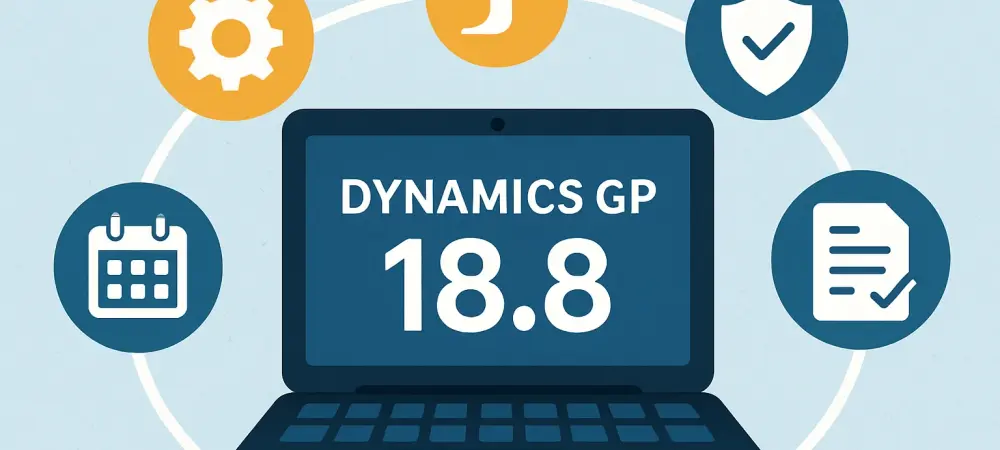Introduction
Imagine a business environment where every update to an ERP system directly addresses the most pressing needs of its users, enhancing efficiency and compliance in one seamless package. This is the reality for users of Microsoft Dynamics GP with the release of version 18.8, also known as GP 2026, launched on October 1. This update marks a significant milestone for companies relying on this robust software to manage their financial and operational processes.
The purpose of this FAQ is to provide clear, actionable insights into the latest features, compatibility requirements, and long-term support strategies for Dynamics GP 18.8. By addressing key questions, this piece aims to guide businesses through the upgrade process and highlight the value of these enhancements.
Readers can expect to gain a comprehensive understanding of how this release improves user experience, ensures system reliability, and aligns with modern technological standards. The scope covers critical updates, infrastructure considerations, and the broader implications for sustained use of Dynamics GP in a competitive landscape.
Key Questions About Dynamics GP 18.8
What Are the Major Feature Updates in Dynamics GP 18.8?
Dynamics GP 18.8 introduces a series of enhancements driven by community feedback, reflecting a commitment to addressing real-world user challenges. These updates focus on improving functionality across various modules, ensuring that businesses can operate with greater accuracy and ease. The emphasis on user-voted features underscores the collaborative nature of this release.
Among the standout additions are SOP Save Guardrails, designed to prevent incomplete sales order entries by adding protective checks during data input. Other notable updates include Luxury Auto Depreciation for precise tracking of vehicle-related data and Sales Batches Navigation to streamline the review of unposted batches, reducing errors in financial reporting. Additionally, safety measures in Payables Setup prevent unintended mass updates, while VAT Submission enhancements ensure better compliance with regulatory requirements. These features are not arbitrary but are rooted in suggestions gathered through Microsoft’s platform, showcasing a direct response to user needs.
These targeted improvements demonstrate how Dynamics GP continues to evolve as a practical tool for small and medium-sized enterprises, enhancing day-to-day operations with measurable impact.
What Are the Compatibility and Infrastructure Requirements for This Release?
Understanding the technical foundation for Dynamics GP 18.8 is crucial for businesses planning an upgrade. While the final release notes are still under review, initial indications suggest that the base requirements will align closely with those of the previous version, GP 18.7, ensuring a smooth transition for most users. This continuity minimizes disruption during implementation.
Key compatibility updates include support for modern security protocols like TLS 1.3, alongside prerequisites such as .NET Framework 4.7.2. The system also aligns with SQL Server and Windows Server versions released in the current year, offering scalability for long-term infrastructure planning. For organizations with customizations, using Visual Studio 2019 is recommended to maintain and extend system capabilities effectively.
This focus on compatibility highlights a strategic effort to keep Dynamics GP relevant in an era of rapid technological advancement. Businesses are encouraged to review their current setups against these standards to ensure seamless integration, avoiding potential bottlenecks during the upgrade process.
How Does Dynamics GP 18.8 Reflect Long-Term Support and Relevance?
Amid speculation about the future of legacy ERP systems, Dynamics GP 18.8 stands as a testament to its ongoing viability for business operations. Positioned as a “sunrise” rather than a “sunset,” this release signals confidence in the software’s role as a reliable solution for years to come. Such optimism is vital for companies hesitant about transitioning to newer platforms. A commitment to support extends through at least the next eight years, from 2025 to 2033, providing a stable “Safe Haven” for users. This includes access to expert training, upgrades, and consulting services tailored to regional needs across North America. This assurance helps businesses plan with certainty, knowing their investment remains protected.
Beyond immediate support, the release acknowledges diverse user trajectories by offering pathways for those who may eventually outgrow GP, such as transitions to other ERP solutions like D365 Finance & Operations. This balanced approach ensures that all users, regardless of their growth stage, find value and direction in the ecosystem surrounding Dynamics GP.
Summary of Key Insights
Dynamics GP 18.8 brings a host of user-driven enhancements that elevate functionality, from protective guardrails in sales orders to improved compliance tools for VAT submissions. These updates, combined with fixes for quality and reporting, address practical challenges faced by businesses daily, ensuring smoother operations and greater accuracy in financial management.
Compatibility with modern infrastructure, including support for the latest security protocols and server technologies, positions this release as a forward-thinking solution. The emphasis on aligning with current standards like TLS 1.3 and recommending tools such as Visual Studio 2019 for customizations reflects a dedication to long-term scalability and security for all users.
For those seeking deeper exploration, additional resources on ERP upgrades and technical specifications are available through dedicated support networks. Staying informed about these aspects can significantly aid in planning and executing a successful transition to the latest version of this enduring software.
Final Thoughts
Reflecting on the rollout of Dynamics GP 18.8, it becomes evident that the release marks a pivotal moment for businesses committed to optimizing their ERP systems. The blend of community-driven updates and robust support frameworks offers a renewed sense of confidence among users navigating complex operational demands. As a next step, companies are advised to initiate detailed upgrade planning, assessing their current infrastructure against the outlined compatibility requirements. Engaging with expert support services can further streamline this process, ensuring minimal disruption while maximizing the benefits of new features.
Looking ahead, the sustained commitment to Dynamics GP suggests a future where businesses can confidently adapt to evolving needs, whether by leveraging current enhancements or exploring alternative solutions as their requirements expand. This proactive stance toward system evolution remains a cornerstone for sustained success in a dynamic market.

